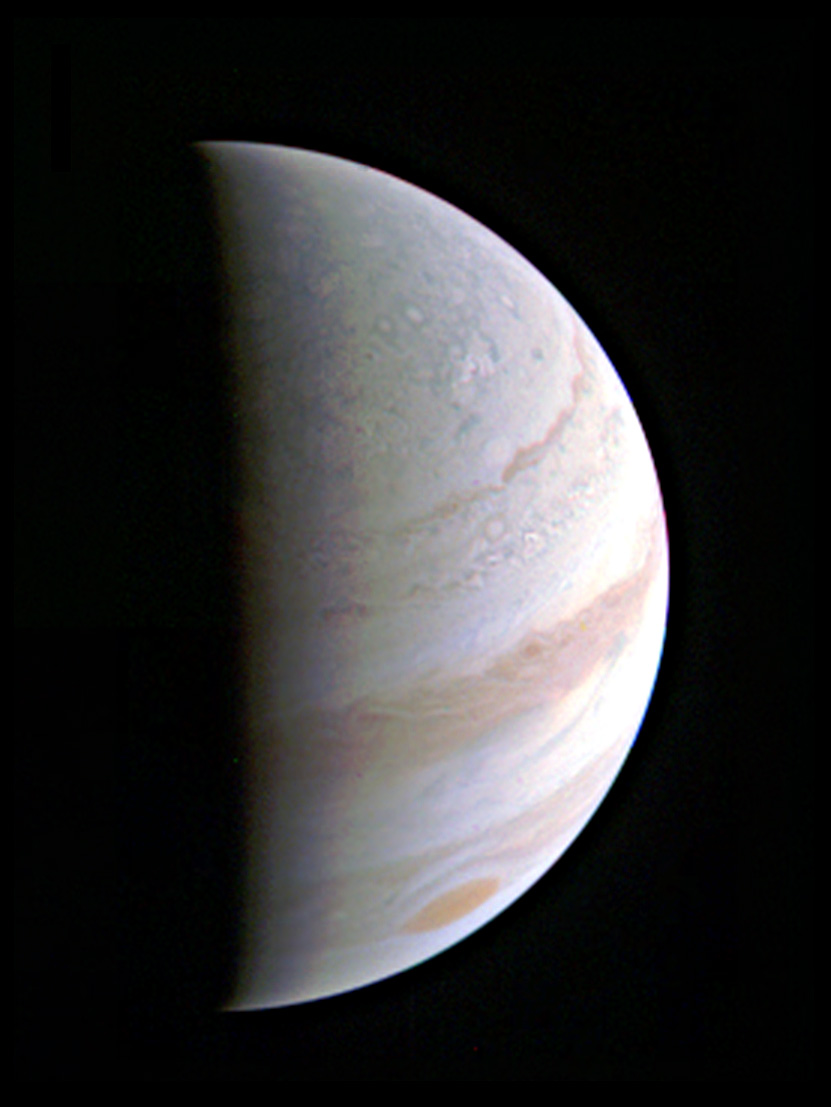
NASA’s JUNO spacecraft successfully swooped over the Jovian cloud tops today, Saturday, Aug. 27, gathering its first up close images and science observations of the ‘King of the Planets’ since braking into orbit on America’s Independence Day.
Saturdays’ close encounter with Jupiter soaring over its north pole was the first of 36 planned orbital flyby’s by Juno during the scheduled 20 month long prime mission.
“Soarin’ over #Jupiter. My 1st up-close look of the gas-giant world was a success!” the probe tweeted today post-flyby.
NASA released Juno’s first up-close image taken by the JunoCam visible light camera just hours later – as seen above.
Juno was speeding at some 130,000 mph (208,000 kilometers per hour) during the time of Saturday’s closest approach at 9:44 a.m. EDT (6:44 a.m. PDT 13:44 UTC) over the north polar region.
It passed merely 2,600 miles (4,200 kilometers) above the turbulent clouds of the biggest planet in our solar system during its initial 53.5 day polar elliptical capture orbit.
And apparently everything proceeded as the science and engineering team leading the mission to the gas giant had planned.
“Early post-flyby telemetry indicates that everything worked as planned and Juno is firing on all cylinders,” said Rick Nybakken, Juno project manager at NASA’s Jet Propulsion Laboratory in Pasadena, California, in a statement.
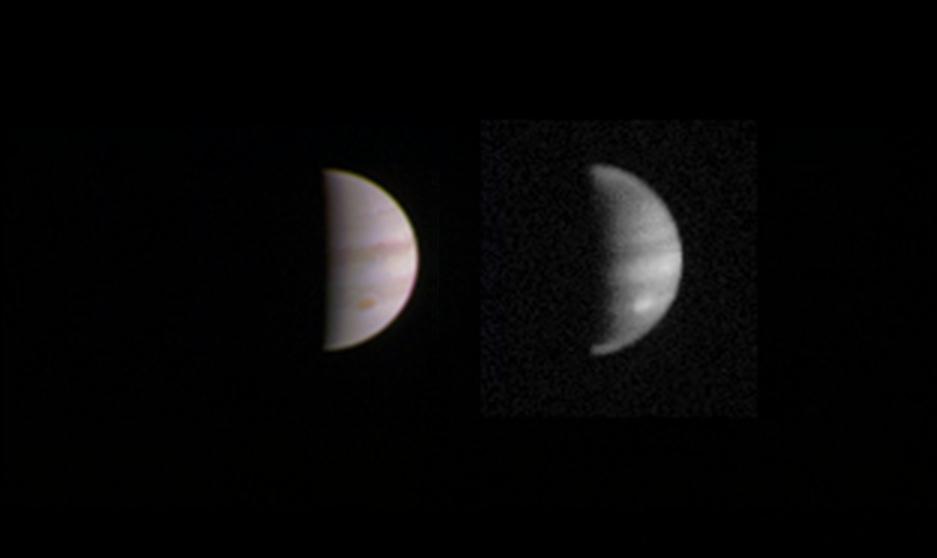
Indeed Saturday’s encounter will count as the closest of the entire prime mission. It also marks the first time that the entire suite of nine state-of-the-art science instruments had been turned on to gather the totally unique observations of Jupiter’s interior and exterior environment.
“We are getting some intriguing early data returns as we speak,” said Scott Bolton, principal investigator of Juno from the Southwest Research Institute in San Antonio, in a statement.
“This is our first opportunity to really take a close-up look at the king of our solar system and begin to figure out how he works.”
Additional up-close high resolution imagery of the Jovian atmosphere, swirling cloud tops and north and south poles snapped by JunoCam will be released in the coming weeks, perhaps as soon as next week.
“We are in an orbit nobody has ever been in before, and these images give us a whole new perspective on this gas-giant world,” said Bolton.
“It will take days for all the science data collected during the flyby to be downlinked and even more to begin to comprehend what Juno and Jupiter are trying to tell us.”
The prime mission is scheduled to end in February of 2018 with a suicide plunge into the Jovian atmosphere to prevent any possible contamination with Jupiter’s potentially habitable moons such as Europa and Ganymede.
“No other spacecraft has ever orbited Jupiter this closely, or over the poles in this fashion,” said Steve Levin, Juno project scientist from NASA’s Jet Propulsion Laboratory in Pasadena, California. “This is our first opportunity and there are bound to be surprises. We need to take our time to make sure our conclusions are correct.”
The team did release an approach image taken by JunoCam on Aug. 23 when the spacecraft was 2.8 million miles (4.4 million kilometers) from the gas giant planet on the inbound leg of its initial 53.5-day capture orbit.
One additional long period orbit is planned. The main engine will fire again in October to reduce the orbit to the 14 day science orbit.
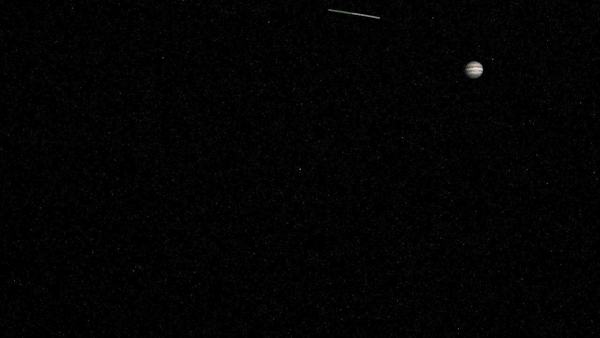
The solar powered probe will collect unparalleled new data that will unveil the hidden inner secrets of Jupiter’s origin and evolution as it peers “beneath the obscuring cloud cover of Jupiter and study its auroras to learn more about the planet’s origins, structure, atmosphere and magnetosphere.”
The $1.1 Billion Juno was launched on Aug. 5, 2011 from Cape Canaveral Air Force Station, Florida atop the most powerful version of the Atlas V rocket augmented by 5 solid rocket boosters and built by United Launch Alliance (ULA). That same Atlas V 551 version recently launched MUOS-5 for the US Navy on June 24.
The Juno spacecraft was built by prime contractor Lockheed Martin in Denver.
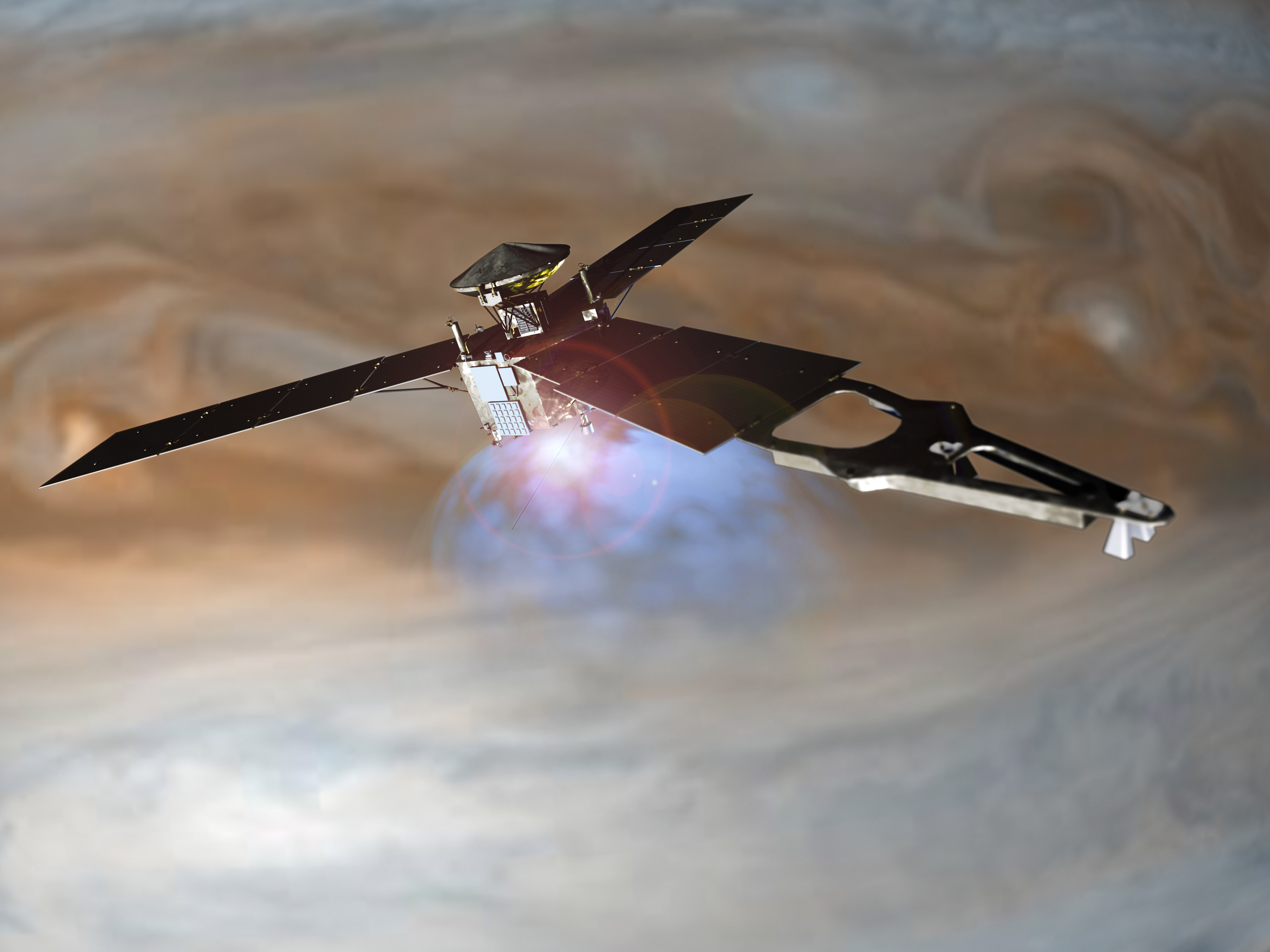
The last NASA spacecraft to orbit Jupiter was Galileo in 1995. It explored the Jovian system until 2003.
In the final weeks of the approach before Jupiter Orbit Insertion (JOI), JunoCam captured dramatic views of Jupiter and all four of the Galilean Moons moons — Io, Europa, Ganymede and Callisto.
At the post JOI briefing at JPL on July 5, these were combined into a spectacular JunoCam time-lapse movie released by Bolton and NASA.
Watch and be mesmerized -“for humanity, our first real glimpse of celestial harmonic motion” says Bolton.
Video caption: NASA’s Juno spacecraft captured a unique time-lapse movie of the Galilean satellites in motion about Jupiter. The movie begins on June 12th with Juno 10 million miles from Jupiter, and ends on June 29th, 3 million miles distant. The innermost moon is volcanic Io; next in line is the ice-crusted ocean world Europa, followed by massive Ganymede, and finally, heavily cratered Callisto. Galileo observed these moons to change position with respect to Jupiter over the course of a few nights. From this observation he realized that the moons were orbiting mighty Jupiter, a truth that forever changed humanity’s understanding of our place in the cosmos. Earth was not the center of the Universe. For the first time in history, we look upon these moons as they orbit Jupiter and share in Galileo’s revelation. This is the motion of nature’s harmony. Credits: NASA/JPL-Caltech/MSSS
Stay tuned here for Ken’s continuing Earth and Planetary science and human spaceflight news.
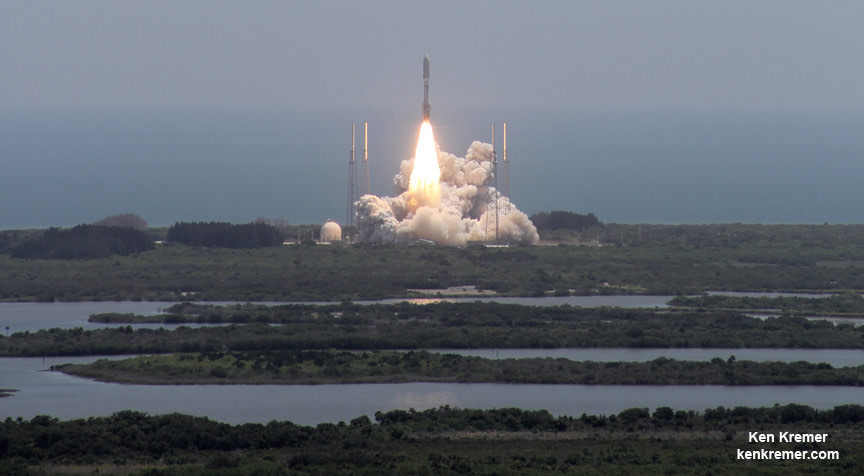

Just to say readers may be interested, someone has uploaded a brightness and contrast enhanced version of this image to the public processing area for JunoCam. It’s here.
https://www.missionjuno.swri.edu/junocam/processing?id=50